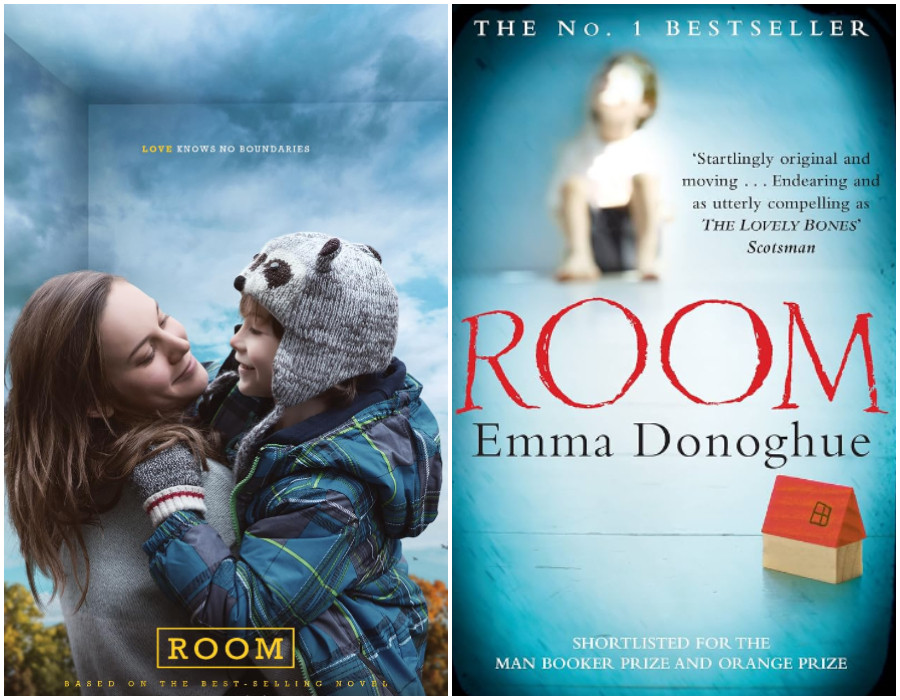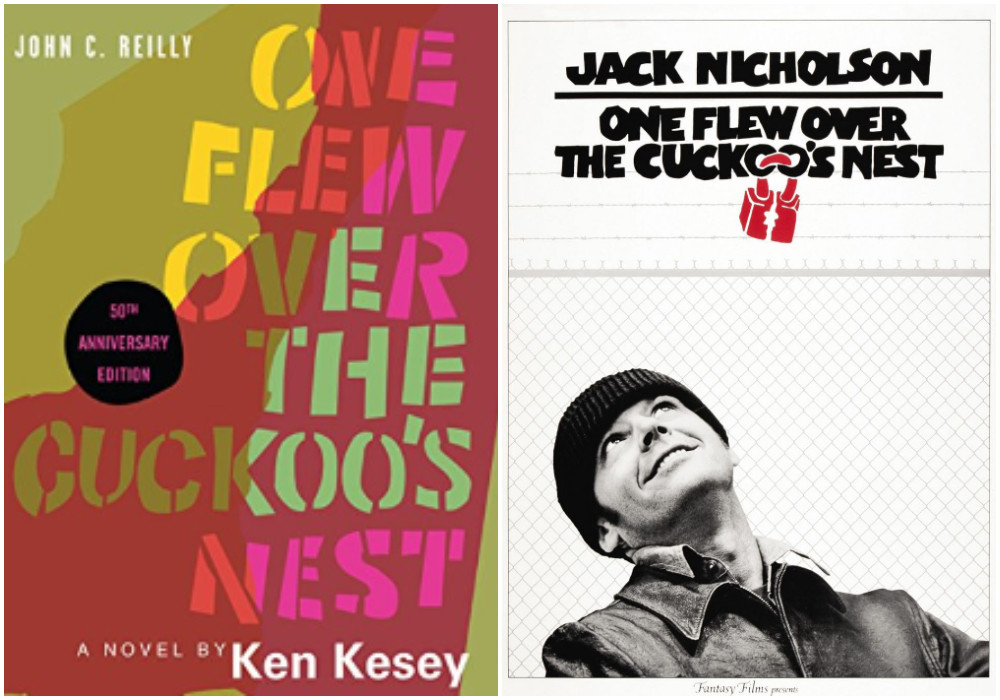Our List of All-Time Favorite Book-to-Movie Adaptations

©️ New Line Cinema / WingNut Films / Saul Zaentz Film Co.
It’s an exciting time in the entertainment world with movies hitting the screens and the award season in full swing. The trend of adapting books into movies is gaining momentum, offering audiences a diverse range of cinematic experiences. Without further ado, here is a curated list of our favorite book-to-movie adaptations that have left a lasting impact.
To Kill a Mockingbird (1962)

In the 1962 rendition of Harper Lee’s revered and Pulitzer Prize-winning novel, the spotlight shines on the skillful character development meticulously crafted by Lee. The film brilliantly breathes life into the iconic figures of Atticus Finch, Scout, and Boo Radley. This cinematic adaptation seamlessly transfers the novel’s twin pillars of strength onto the silver screen. It creates a movie that continues to captivate audiences with its timeless allure. The enduring appeal of this film lies in its ability to fully capture and rekindle the essence of Lee’s narrative, making it an enduring and cherished cinematic experience.
The Godfather (1972, 1974)

Mario Puzo’s enthralling and ominous thriller weaves a tale that simultaneously captivates, unsettles, and engrosses. In the hands of Francis Ford Coppola, the initial two cinematic adaptations derived from Puzo’s narrative transcend the squalid storyline. It gradually evolved into grand operatic achievements that have earned acclaim as two of the most exceptional films ever crafted. Both movies achieved the pinnacle of recognition with Academy Awards for Best Picture. Notably, the sequel, Part II, etched its place in history as the inaugural sequel to secure this prestigious accolade. Furthermore, both films garnered Oscars for their exceptional adaptations, solidifying their status as unparalleled cinematic accomplishments.
Little Women (2019)

Even though Greta Gerwig faced an unexpected absence of Oscar nominations that year, her adaptation of Louisa May Alcott’s timeless novel stands as a remarkable achievement. Gerwig introduces a clever narrative twist by reimagining Jo as the actual author of the novel “Little Women.” Gerwig’s innovative approach breathes new life into the story. It offers audiences a revitalized perspective while staying true to the essence of Alcott’s masterpiece.
Hidden Figures (2016)

The film, derived from Margot Lee Shetterly’s source material, stands as a spectacular achievement. “Hidden Figures” unveils the authentic narrative of Katherine Johnson, Dorothy Vaughan, and Mary Jackson. They are mathematicians and human computers instrumental in the US space program. The movie not only illuminates the poignant struggle of black women striving for recognition as intellectual equals but also weaves an intimately thrilling tale of overcoming adversity. In doing so, the book-to-movie adaptation captivates audiences with a compelling exploration of resilience and triumph against the odds. This makes it a cinematic gem that transcends its historical context.
The Lord of the Rings (2001-2003)

In Peter Jackson’s trilogy of films, the essence of J.R.R. Tolkien’s timeless epic fantasy novels is faithfully retained, albeit in a more streamlined form. Jackson’s remarkable achievement, aided by groundbreaking CGI, lies in his ability to bring to life the most renowned fantasy universe ever imagined. The films masterfully depict this expansive realm in a realistic and believable manner. Furthermore, it does this without sacrificing the core elements of hope, heroism, and despair that pulse at the heart of Tolkien’s narrative. In doing so, Jackson delivers a cinematic experience that resonates with the grandeur and emotional depth inherent in the novels.
Fight Club (1999)

David Fincher’s interpretation of Chuck Palahniuk’s novel demonstrates a surprising level of fidelity, despite the noticeable differences. The film retains virtually all elements from the novel but introduces a more conventional narrative structure. Palahniuk’s original work is a visceral outpouring of rage and frustration. On the other hand, Fincher’s adaptation transforms into a polished critique of contemporary consumerist culture and the concept of masculinity. However, Fincher’s innovative choice to incorporate a voiceover seamlessly integrates the Narrator’s perspective into the visual landscape of the film. It effectively captures the nightmarish tone of the story. This decision adds a layer of complexity, creating a cinematic experience that mirrors the unsettling essence of the source material while offering a unique lens through which to explore the narrative’s thematic depth.
Room (2015)

Before her novel was even published, Emma Donoghue took charge of writing the screenplay adaptation, driven by a conviction that the story would undoubtedly capture the attention of filmmakers. Mirroring the claustrophobic and horrifying tone intrinsic to the novel, director Lenny Abrahamson made a bold decision by confining the entire narrative to a single set. Additionally, Abrahamson strategically withholds any shots from outside the confined space until after the escape. This intensifies the emotional impact of the storyline. This directorial choice adds a layer of suspense and unease, aligning seamlessly with the source material’s atmospheric and gripping nature. The outcome is a meticulously crafted and highly faithful adaptation, elevated to greatness by the exceptional performances of Brie Larson and Jacob Tremblay.
One Flew Over the Cuckoo’s Nest (1975)

In Milos Forman’s 1975 adaptation of Ken Kesey’s novel, a departure from strict faithfulness to the source material results in a cinematic masterpiece that stands on its own merits. The film strategically shifts its focus from the hulking, silent Chief — the novel’s narrator and primary point of view — to the unpredictable and charismatic McMurphy, portrayed by Jack Nicholson. This alteration transforms McMurphy into more of a playful prankster rather than the violent, amoral character depicted in the novel. Despite these creative liberties, the film achieved remarkable success, securing five major Academy Awards (Best Picture, Best Director, Best Actor, Best Actress, and Best Adapted Screenplay). The adaptation’s unique interpretation adds a layer of cinematic brilliance that resonates independently while still paying homage to Kesey’s literary legacy.
The Perks of Being a Wallflower (2012)

Back in 1999, Stephen Chbosky introduced his iconic narrative, destined to become a cherished favorite among young adults. From the inception of the project, Chbosky harbored a dream of transforming his compelling story into a screenplay. More than a decade later, he brought the book’s challenging themes of drug use and fractured friendships to life in a poignant film. This cinematic adaptation earned acclaim, resonating profoundly with even the most dedicated book enthusiasts. The source material is elevated by stellar performances from the likes of Emma Watson, Paul Rudd, and Logan Lerman.
Psycho (1960)

Alfred Hitchcock’s 1960 book-to-movie adaptation stands as a striking departure from Robert Bloch’s 1959 novel. Hitchcock, with his masterful touch, ingeniously seized upon a minor character in the novel, Marion Crane, and transformed her narrative into one of the most iconic MacGuffins in film history. Simultaneously, he redefined the character of Norman Bates, imbuing him with a heightened sense of creepiness and danger compared to the original alcoholic, middle-aged portrayal in the book. While both Bloch’s novel and Hitchcock’s adaptation are exceptional in their own right, it’s the film that indelibly etches itself into the collective memory of audiences. Hitchcock’s visionary reinterpretation adds a layer of suspense and cinematic brilliance that has secured its place as a lasting cultural phenomenon.
The Silence of the Lambs (1991)

Jonathan Demme’s adaptation of Thomas Harris’s novel maintains a close fidelity in most dimensions, yet it introduces two pivotal elements that transcend the source material: the inclusion of Jodie Foster and Anthony Hopkins. Their performances are not just good; they are transformative, leaving an indelible mark on the cinematic landscape. The sheer memorability and visceral conviction they bring to their roles transcend the confines of a dark and intricate thriller, elevating it to the status of a timeless cultural cornerstone. The mere mention of “Clarice” with Hopkins’s distinctive inflections has become a universally recognized reference, showcasing the enduring impact of their contributions. Demme’s adaptation, with these additions, reshapes the narrative into an iconic cultural phenomenon that resonates far beyond its literary origins.
And there you have it—the magical intersection of literature and film. These book-to-movie adaptations have taken us on unforgettable journeys, bringing beloved stories to vivid life. As the screen dims and the final scenes fade, we invite you to carry the magic with you. Whether you revisit the pages of the original books or explore new cinematic worlds, may the enchantment of storytelling linger. Don’t hesitate to add your favorite!
You may also like: The Live-Action Naruto Movie Is Finally Becoming a Reality


